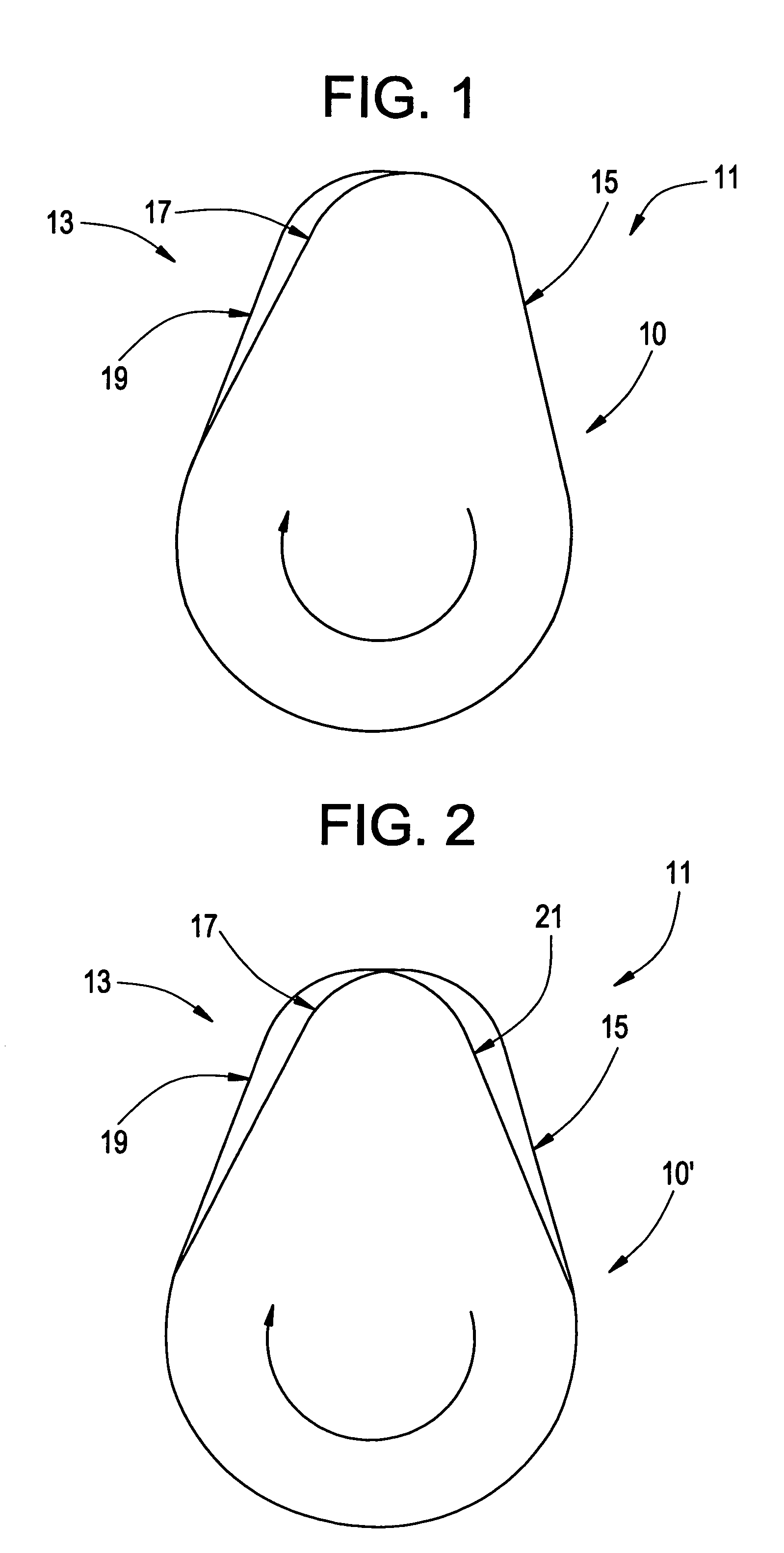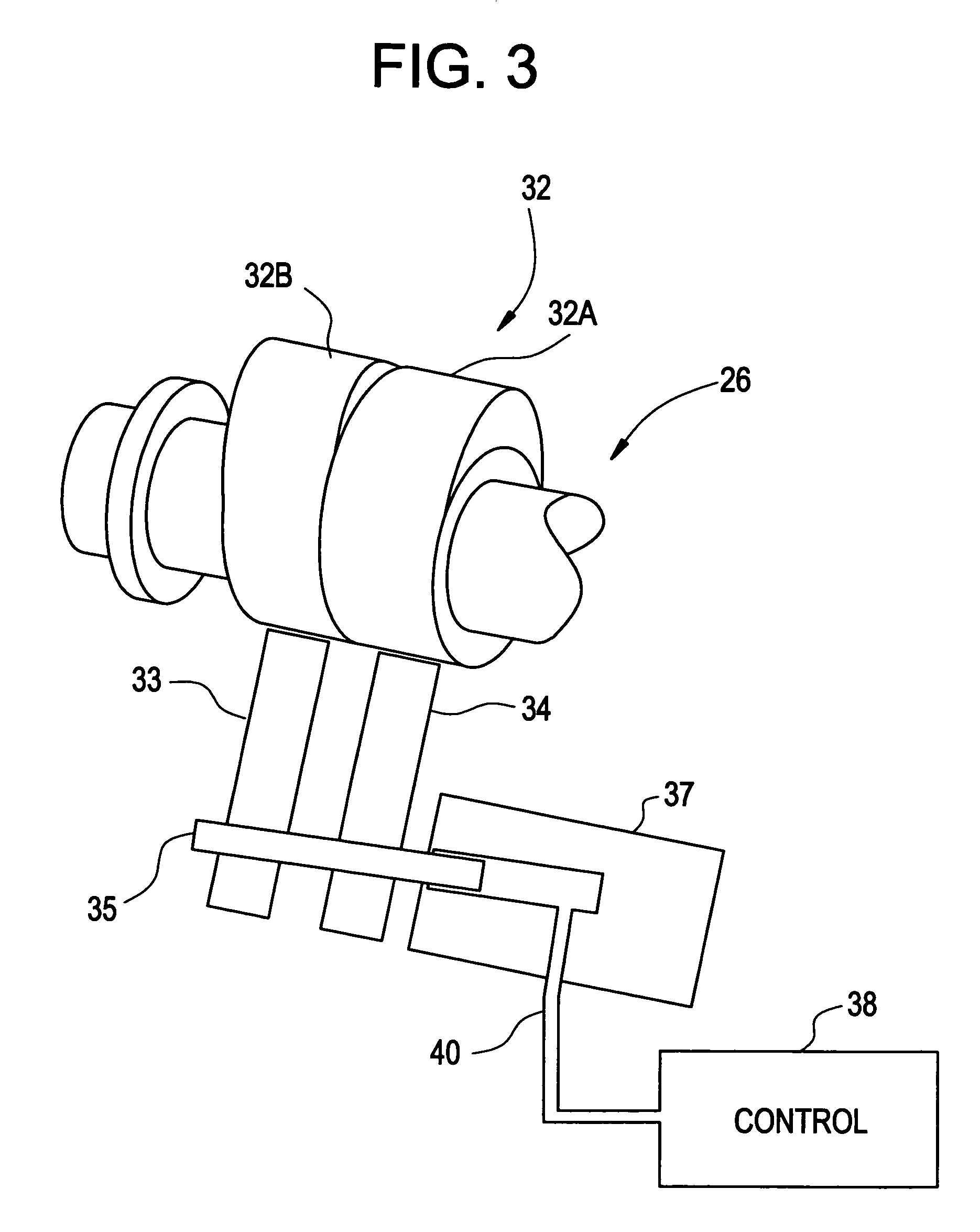Diesel engine with dual-lobed intake cam for compression ratio control
a dual-lobed intake cam and compression ratio technology, which is applied in the direction of machines/engines, valve arrangements, mechanical equipment, etc., can solve the problems of reducing the effective compression ratio, increasing the conversion of pumping losses, and limiting exhaust emissions, etc., to achieve the effect of reducing the compression ratio
- Summary
- Abstract
- Description
- Claims
- Application Information
AI Technical Summary
Benefits of technology
Problems solved by technology
Method used
Image
Examples
Embodiment Construction
[0013]A diesel engine has a variable compression ratio in accordance with the invention. A diesel engine conventionally includes a plurality of cylinders having therein reciprocable pistons connected with a crankshaft. The ends of the cylinder are closed by a cylinder head so that the cylinders and pistons define expansible combustion chambers.
[0014]The cylinder head is provided with intake valves which control the timing and flow of intake air into the cylinders during intake strokes of the pistons. Exhaust valves in the cylinder head control timing and flow of exhaust products from the combustion chambers during exhaust strokes of the pistons. In the engine there may be multiple intake valves and multiple exhaust valves for each cylinder, however, any suitable number of valves provided for operation of the engine may be utilized in accordance with the invention.
[0015]The intake and the exhaust valves are actuated by separate intake and exhaust camshafts through rocker arms. The in...
PUM
 Login to View More
Login to View More Abstract
Description
Claims
Application Information
 Login to View More
Login to View More - R&D
- Intellectual Property
- Life Sciences
- Materials
- Tech Scout
- Unparalleled Data Quality
- Higher Quality Content
- 60% Fewer Hallucinations
Browse by: Latest US Patents, China's latest patents, Technical Efficacy Thesaurus, Application Domain, Technology Topic, Popular Technical Reports.
© 2025 PatSnap. All rights reserved.Legal|Privacy policy|Modern Slavery Act Transparency Statement|Sitemap|About US| Contact US: help@patsnap.com



